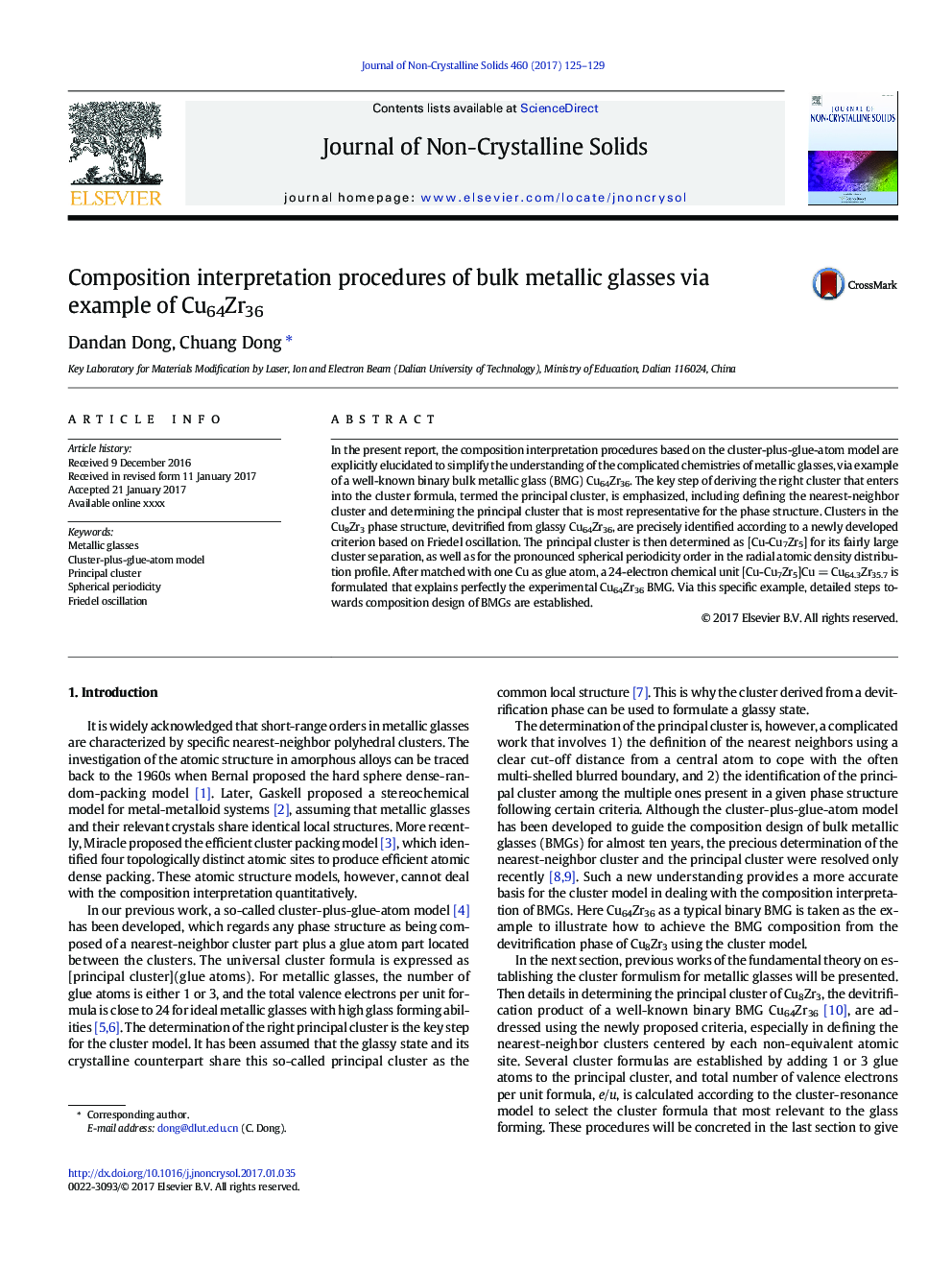| Article ID | Journal | Published Year | Pages | File Type |
|---|---|---|---|---|
| 5441343 | Journal of Non-Crystalline Solids | 2017 | 5 Pages |
Abstract
In the present report, the composition interpretation procedures based on the cluster-plus-glue-atom model are explicitly elucidated to simplify the understanding of the complicated chemistries of metallic glasses, via example of a well-known binary bulk metallic glass (BMG) Cu64Zr36. The key step of deriving the right cluster that enters into the cluster formula, termed the principal cluster, is emphasized, including defining the nearest-neighbor cluster and determining the principal cluster that is most representative for the phase structure. Clusters in the Cu8Zr3 phase structure, devitrified from glassy Cu64Zr36, are precisely identified according to a newly developed criterion based on Friedel oscillation. The principal cluster is then determined as [Cu-Cu7Zr5] for its fairly large cluster separation, as well as for the pronounced spherical periodicity order in the radial atomic density distribution profile. After matched with one Cu as glue atom, a 24-electron chemical unit [Cu-Cu7Zr5]Cu = Cu64.3Zr35.7 is formulated that explains perfectly the experimental Cu64Zr36 BMG. Via this specific example, detailed steps towards composition design of BMGs are established.
Related Topics
Physical Sciences and Engineering
Materials Science
Ceramics and Composites
Authors
Dandan Dong, Chuang Dong,
